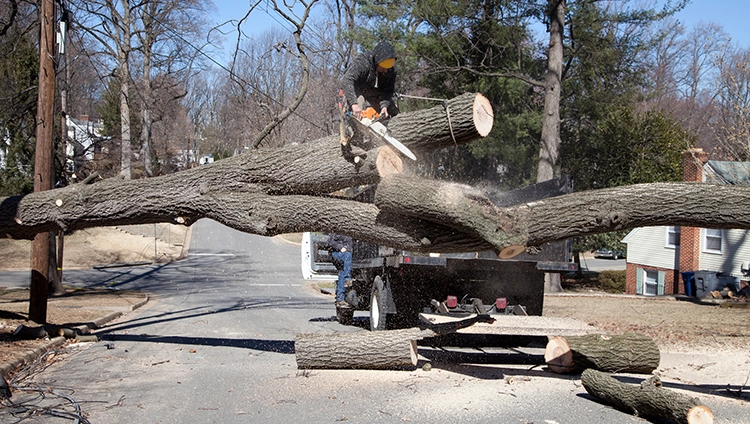Trees are a beautiful and essential part of our environment, providing shade, oxygen, and aesthetic value. However, they can also pose risks during extreme weather conditions or due to unforeseen circumstances. In order to ensure the safety of yourself, your property, and the surrounding area, it is crucial to be prepared for emergency tree situations. This article will guide you through the process of planning and prevention to minimize the potential dangers associated with trees.
Table of Contents
1- Regular Tree Maintenance:
The first step in preventing emergency tree situations is to invest in regular tree maintenance. This includes pruning dead or weak branches, inspecting the overall health of the tree, and identifying any signs of disease or decay. Engaging the services of a certified arborist can help ensure proper tree care and maintenance.
2- Assessing Tree Hazards:
Conducting a thorough assessment of your property’s trees is vital for identifying potential hazards. Look for signs such as leaning trunks, large dead branches, or root damage. Identify any trees in close proximity to structures, power lines, or other vulnerable areas. If you feel any dead branches or root damage contact our team to getting help in cutting or trimming according to the situation. By recognizing these hazards in advance, you can take appropriate action to mitigate the risks.
3- Establishing Emergency Contacts:
Maintaining a list of emergency contacts is crucial to handle tree-related emergencies effectively. Include the contact information of certified arborists, tree removal services, local authorities, and utility companies. This ensures that you have immediate access to the necessary assistance when needed.
4- Developing An Emergency Action Plan:
Creating an emergency action plan specific to tree-related incidents is essential. Determine the appropriate steps to take in case of a fallen tree, broken branches, or other related emergencies. Educate your family members or colleagues about the plan, including evacuation routes, safe zones, and emergency supplies required.
5- Adequate Insurance Coverage:
Review your homeowner’s insurance policy to understand the coverage for tree-related incidents and damages. Contact your insurance provider to ensure you have adequate coverage in case of emergencies. Understanding the terms and conditions of your policy can help you make informed decisions during critical situations.
6- Storm Preparation:
Severe storms can cause significant damage to trees and pose a risk to nearby structures. Before a storm arrives, take proactive measures such as trimming overhanging branches, securing loose items in your yard, and reinforcing weak trees. If a storm is forecasted, stay informed through weather updates and be prepared to take immediate action if necessary.
7- Tree Removal And Pruning:
In some cases, removing a tree may be the best course of action to prevent potential emergencies. If a tree is diseased, severely damaged, or poses an immediate threat, it is crucial to consult with a professional arborist for removal of tree service. They have the expertise and equipment to safely remove the tree and mitigate any risks involved. Additionally, regular pruning of trees can help maintain their health and structural integrity, reducing the likelihood of falling branches or toppling.
8- Communication With Neighbors:
If you have trees close to property boundaries, it is important to communicate and collaborate with your neighbors regarding tree maintenance and potential hazards. Discuss any concerns or issues you may have and work together to ensure the safety of both properties. This collaborative approach can help identify shared responsibilities and prevent disputes in the event of an emergency.
9- Knowledge Of Local Regulations:
Familiarize yourself with local regulations and permits related to tree removal, pruning, and maintenance. Different areas may have specific guidelines and restrictions regarding tree care. Understanding these regulations ensures that you comply with the law while making informed decisions about your trees.
10- Emergency Preparedness Kit:
As part of your emergency planning, it’s essential to have an emergency preparedness kit readily available. Include items such as a first aid kit, flashlight, batteries, portable radio, non-perishable food, water, and a list of important contacts. Keep the kit in a designated location that is easily accessible to all household members or employees.
11- Community Awareness:
Encourage community awareness about emergency tree situations by organizing or participating in local initiatives. Collaborate with neighborhood associations, local government, or environmental organizations to educate residents about the importance of tree maintenance, potential hazards, and emergency preparedness. Sharing knowledge and resources can help create a safer environment for everyone.
Conclusion:
In conclusion, preparing for emergency tree situations through planning and prevention is a vital responsibility for every property owner. By investing in regular tree maintenance, assessing hazards, establishing emergency contacts, creating an action plan, and staying informed, you can significantly reduce the risks associated with trees. Additionally, proactive measures such as tree removal, ongoing monitoring, and community awareness contribute to a safer environment for all. Remember, when it comes to emergency tree situations, prioritizing safety and seeking professional assistance are paramount. By taking these steps, you can be well-prepared to handle any unexpected tree-related incidents and protect yourself, your property, and your community.

